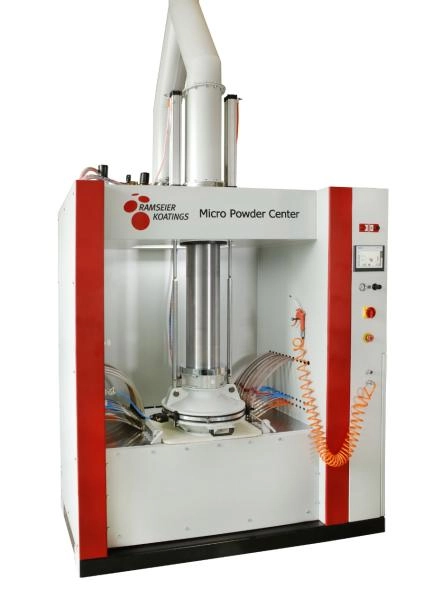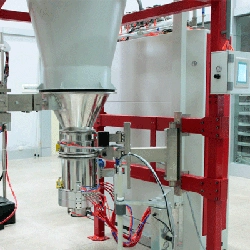Content Menu
● Understanding Powder Hoppers
>> What is a Powder Hopper?
>> Common Functions of Powder Hoppers
● Material Selection for Powder Hoppers: Stainless Steel vs. Plastic
● Characteristics of Stainless Steel Powder Hoppers
>> Advantages of Stainless Steel Hoppers
>>> High Durability and Strength
>>> Corrosion Resistance
>>> Hygienic and Easy to Clean
>>> Temperature Resistance
>> Limitations of Stainless Steel Hoppers
>>> Higher Initial Cost
>>> Heavier Weight
>>> Potential for Corrosion under Harsh Conditions
● Characteristics of Plastic Powder Hoppers
>> Advantages of Plastic Hoppers
>>> Lightweight and Portable
>>> Cost-Effective
>>> Chemical Resistance
>>> Impact Resistance and Flexibility
>> Limitations of Plastic Hoppers
>>> Lower Mechanical Strength
>>> Temperature Sensitivity
>>> Hygiene and Cleaning Concerns
● Comparative Analysis of Stainless Steel and Plastic Powder Hoppers
>> 1. Durability and Strength
>> 2. Chemical Compatibility
>> 3. Hygienic Standards
>> 4. Cost and Budgetary Considerations
>> 5. Weight and Installation
>> 6. Temperature Resistance
● Application Considerations When Choosing Between Stainless Steel and Plastic Hoppers
>> Food and Pharmaceutical Industries
>> Chemical Processing
>> Heavy-Duty Industrial Use
>> Light-Duty or Temporary Use
>> Temperature Sensitive Processing
● Maintenance and Longevity
>> Stainless Steel Maintenance
>> Plastic Hopper Maintenance
● Environmental Impact and Sustainability
● Summary Table: Stainless Steel vs Plastic Powder Hoppers
● Frequently Asked Questions (FAQs)
>> 1. Can plastic powder hoppers be used for food-grade applications?
>> 2. How do temperature extremes affect the choice of hopper material?
>> 3. Are stainless steel powder hoppers prone to corrosion?
>> 4. What factors influence the cost difference between stainless steel and plastic hoppers?
>> 5. How does powder type affect hopper material selection?
● Conclusion
In many industries such as pharmaceuticals, food processing, chemicals, and manufacturing, powder handling plays a critical role. Efficient storage, transfer, and dispensing of powders are essential to maintain product quality and process efficiency. Powder hoppers are indispensable components in such systems, serving as temporary storage containers that facilitate smooth material flow. Among the wide variety of hopper materials available, stainless steel and plastic are two of the most common choices. Both come with their own sets of advantages and disadvantages, influencing their suitability for specific applications.
This article delves into the key differences between stainless steel and plastic powder hoppers. Understanding these distinctions will help engineers, plant managers, and buyers make informed decisions when choosing or designing powder handling equipment.

Understanding Powder Hoppers
Before diving into the material comparison, it's important to understand what powder hoppers are and their general purpose.
What is a Powder Hopper?
A powder hopper is a container or vessel designed to hold dry powders and granular materials temporarily during processing or packaging. It helps regulate the flow of powder into downstream equipment such as feeders, mixers, tablet presses, or packaging lines.
Common Functions of Powder Hoppers
- Temporary storage of powders.
- Controlled dispensing into process or packaging equipment.
- Prevention of material contamination.
- Ease of handling and maintenance within a production line.
Material Selection for Powder Hoppers: Stainless Steel vs. Plastic
The choice of material greatly affects the hopper's durability, cost, hygienic properties, and compatibility with powder substances.
Characteristics of Stainless Steel Powder Hoppers
Stainless steel is an alloy primarily consisting of iron with a minimum of 10.5% chromium. It is known for its excellent corrosion resistance, durability, and aesthetic appearance.
Advantages of Stainless Steel Hoppers
High Durability and Strength
Stainless steel hoppers possess exceptional mechanical strength and resistance to wear and tear. They withstand high-impact forces and abrasive substances, making them ideal for heavy-duty industrial use.
Corrosion Resistance
The chromium content forms a passive oxide layer on the surface, protecting the steel from rust and chemical attack. This feature is particularly beneficial in handling hygroscopic or acidic powders.
Hygienic and Easy to Clean
Stainless steel surfaces are non-porous and smooth, minimizing powder sticking and microbial growth. They are able to withstand aggressive cleaning chemicals and high-temperature sterilization processes, which makes them preferred in food and pharmaceutical applications.
Temperature Resistance
Stainless steel performs well under a wide temperature range and can resist thermal shocks. This is advantageous for powders needing temperature-controlled environments.
Limitations of Stainless Steel Hoppers
Higher Initial Cost
The material and manufacturing costs for stainless steel hoppers are typically higher compared to plastics. This might be a concern for some budget-conscious projects.
Heavier Weight
Stainless steel hoppers are significantly heavier, making them less portable and requiring stronger support structures.
Potential for Corrosion under Harsh Conditions
Though highly resistant, stainless steel can corrode when exposed to highly aggressive chemicals or chlorides without proper surface treatment.
Characteristics of Plastic Powder Hoppers
Plastic powder hoppers are made from various polymers such as polyethylene (PE), polypropylene (PP), polyvinyl chloride (PVC), or other engineered plastics.
Advantages of Plastic Hoppers
Lightweight and Portable
Plastic hoppers are much lighter than stainless steel, making them easier to maneuver and install with minimal structural support.
Cost-Effective
Both the raw material and fabrication costs tend to be lower, making plastic hoppers suitable for budget-restricted or temporary setups.
Chemical Resistance
Many plastics offer good resistance to a broad range of chemicals, including acids and alkalis, helping prevent contamination or degradation.
Impact Resistance and Flexibility
Certain plastics can absorb impact without denting or cracking, which is useful in environments with frequent handling or movement.
Limitations of Plastic Hoppers
Lower Mechanical Strength
Plastic hoppers may not withstand heavy impacts, high pressures, or abrasive powders very well compared to metal counterparts.
Temperature Sensitivity
Most plastics have lower melting points and can deform or degrade under high temperatures, limiting their use in hot environments.
Hygiene and Cleaning Concerns
While plastics can be cleaned, some may have porous surfaces that trap residues or support bacterial growth without stringent cleaning protocols. Not all plastics tolerate harsh cleaning agents.
Comparative Analysis of Stainless Steel and Plastic Powder Hoppers
To make an informed choice, it's necessary to examine several key attributes side by side.
1. Durability and Strength
- Stainless steel hoppers excel in mechanical strength and longevity. They are resistant to dents, scratches, and abrasion.
- Plastic hoppers, while not as robust, often provide sufficient strength for lighter powders and less intense handling conditions.
2. Chemical Compatibility
- Stainless steel is highly resistant to many chemicals but vulnerable to strong acids, chlorides, and saline environments.
- Plastics can be highly chemically resistant depending on the type of polymer used. For example, polypropylene and polyethylene resist many corrosive chemicals better than metals in certain scenarios.
3. Hygienic Standards
- Stainless steel's smooth, non-porous surface is superior for maintaining hygiene, especially in pharmaceutical and food industries.
- Plastic surfaces can sometimes retain residues and promote microbial growth if not regularly or thoroughly cleaned.
4. Cost and Budgetary Considerations
- Plastic hoppers typically have lower upfront costs and reduced labor costs due to easier fabrication and installation.
- Stainless steel hoppers, while costlier, provide longer service life and lower replacement frequency, potentially reducing total cost over time.
5. Weight and Installation
- Stainless steel hoppers are significantly heavier, requiring proper structural support and sometimes more extensive installation logistics.
- Plastic hoppers are lightweight and easier to move, making them favorable for mobile setups or where ease of handling is a priority.
6. Temperature Resistance
- Stainless steel can handle very high temperatures without loss of integrity.
- Most plastics have temperature limitations. High heat can cause plastic deformation or release harmful fumes.
Application Considerations When Choosing Between Stainless Steel and Plastic Hoppers
The final decision depends largely on the specific application and operational environment.
Food and Pharmaceutical Industries
Stainless steel hoppers are the preferred option due to strict hygiene standards, resistance to contamination, and ability to withstand cleaning and sterilization processes.
Chemical Processing
Choice depends on the type of chemicals handled:
- Stainless steel for general powders that are not highly corrosive.
- Plastic hoppers when handling aggressive acids or alkalis that might corrode metal surfaces.
Heavy-Duty Industrial Use
Stainless steel hoppers are ideal for abrasive, dense powders requiring tough mechanical performance.
Light-Duty or Temporary Use
Plastic hoppers are often chosen for temporary setups, prototypes, or applications with minimal mechanical demands.
Temperature Sensitive Processing
For processes involving elevated temperatures, stainless steel is safer and more reliable than plastic.
Maintenance and Longevity
Maintenance protocols vary depending on material construction.
Stainless Steel Maintenance
- Regular inspection for surface damage or corrosion.
- Periodic cleaning with appropriate chemicals or steam sterilization.
- Avoiding exposure to harsh chlorides unless treated.
Plastic Hopper Maintenance
- Frequent cleaning to prevent residue buildup.
- Inspection for cracks, warping, or stress damage.
- Avoidance of prolonged exposure to UV light or solvents that degrade polymer structure.
Environmental Impact and Sustainability
From a sustainability perspective, stainless steel is fully recyclable and benefits from long service life, reducing waste. Plastic hoppers have advantages in weight reduction and energy savings during transport but can pose challenges in disposal or recycling depending on polymer type.
Summary Table: Stainless Steel vs Plastic Powder Hoppers
| Feature | Stainless Steel | Plastic |
| Durability | Very high | Moderate |
| Weight | Heavy | Light |
| Chemical Resistance | Good overall, vulnerable to chlorides | Excellent for some chemicals |
| Hygiene | Excellent | Moderate, depends on type |
| Cost | Higher initial cost | Lower initial cost |
| Temperature Resistance | Very high | Low to moderate |
| Maintenance | Requires inspection & cleaning | Frequent cleaning & damage checks |
| Environmental Impact | Recyclable, long life | Difficult recycling, lighter |
Frequently Asked Questions (FAQs)
1. Can plastic powder hoppers be used for food-grade applications?
Plastic hoppers can be used if the polymer is food-grade certified and the design allows for thorough cleaning. However, stainless steel is usually preferred for its superior hygiene.
2. How do temperature extremes affect the choice of hopper material?
For handling powders at high temperatures or in sterilization, stainless steel is preferred due to its thermal stability. Plastic hoppers may deform or degrade under heat.
3. Are stainless steel powder hoppers prone to corrosion?
Stainless steel is corrosion-resistant but can be susceptible under highly chlorinated or acidic conditions if not properly maintained.
4. What factors influence the cost difference between stainless steel and plastic hoppers?
Material price, fabrication complexity, longevity, maintenance needs, and installation impact total cost. Plastic is cheaper upfront but stainless steel may be more cost-effective over time.
5. How does powder type affect hopper material selection?
Abrasive powders favor robust stainless steel hoppers for durability. Corrosive chemicals may require chemically resistant plastics. Powder stickiness and hygiene demands also factor in.

Conclusion
Choosing between stainless steel and plastic powder hoppers requires careful consideration of application-specific requirements including durability, chemical compatibility, hygiene, cost, weight, temperature, and maintenance. Stainless steel hoppers excel in heavy-duty, hygienic, and temperature demanding environments. Plastic hoppers are advantageous for lightweight, chemical-resistant, and cost-sensitive uses. Understanding the distinctions helps optimize powder handling efficiency and product quality.
Hot Tags: China, Global, OEM, private label, manufacturers, factory, suppliers, manufacturing company










































 .
. 